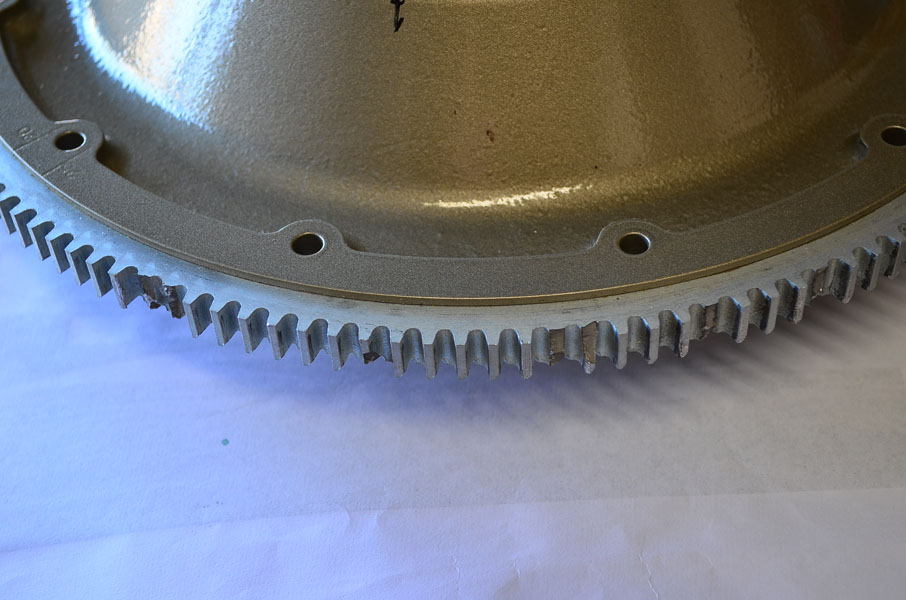I?ll get right to the sad punch line: I had a kickback and broke six teeth on the flywheel ring gear on my engine last weekend during the first start attempt.
Here are the details:
On the first try the engine fired after about two revolutions and ran for about 3 seconds then died before I could get the purge valve to the run position. I primed again and it did the same thing. I tried several more times with the same result. It really seemed like it was trying to start but was starved of fuel. On the sixth try I heard a clunk and the prop stuttered about a second after I pressed the starter button. Six teeth missing from the ring gear. The starter looks fine with no visible damage and the shear pin seems to be intact.
Obviously I need a new ring gear but the most important thing is trying to understand why this happened and prevent it from happening again. I thought the Skytec NL starter shear pin was supposed to protect the ring gear from damage.
I would like to hear comments on possible causes of this incident. The tooth damage was in several different areas. The photo shows it pretty well (yes, I already pulled the flywheel off). What can I do to make sure this is the last time this happens?

Here are the details:
- Aero Sport Power IO-360-B2B
- 8.5:1 compression
- Dual PMags with jumper installed to operate on the A curve. I set the timing on the PMags right at TDC, or as close as my eyeball could align the flywheel mark to the hole in the starter case.
- Catto 3-blade prop
- Skytec 149 NL starter
- Andair fuel pump
- Airflow Performance fuel injection
I used the cold start procedure recommended by AFP for the fuel injection.
a) Purge Valve out (at ICO position)
b) Mixture ? Full Rich
c) Throttle open 1/2
d) Fuel Boost Pump ? ON for 30 to 45 seconds
e) Prime: Purge Valve to RUN position for 5 seconds then back to ICO
f) Throttle to 1/8
g) Propeller Area -- CLEAR
h) Crank engine until it fires then reduce throttle to idle
i) Purge Valve to RUN position
a) Purge Valve out (at ICO position)
b) Mixture ? Full Rich
c) Throttle open 1/2
d) Fuel Boost Pump ? ON for 30 to 45 seconds
e) Prime: Purge Valve to RUN position for 5 seconds then back to ICO
f) Throttle to 1/8
g) Propeller Area -- CLEAR
h) Crank engine until it fires then reduce throttle to idle
i) Purge Valve to RUN position
On the first try the engine fired after about two revolutions and ran for about 3 seconds then died before I could get the purge valve to the run position. I primed again and it did the same thing. I tried several more times with the same result. It really seemed like it was trying to start but was starved of fuel. On the sixth try I heard a clunk and the prop stuttered about a second after I pressed the starter button. Six teeth missing from the ring gear. The starter looks fine with no visible damage and the shear pin seems to be intact.
Obviously I need a new ring gear but the most important thing is trying to understand why this happened and prevent it from happening again. I thought the Skytec NL starter shear pin was supposed to protect the ring gear from damage.
I would like to hear comments on possible causes of this incident. The tooth damage was in several different areas. The photo shows it pretty well (yes, I already pulled the flywheel off). What can I do to make sure this is the last time this happens?





